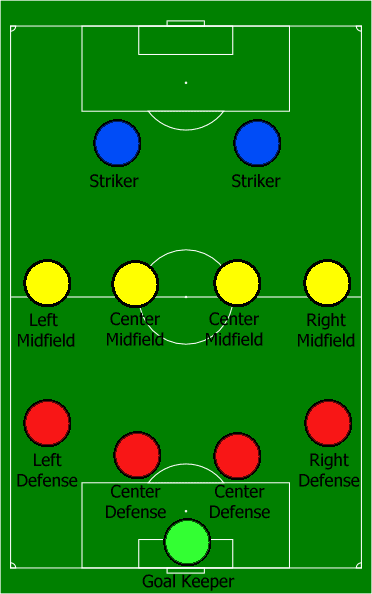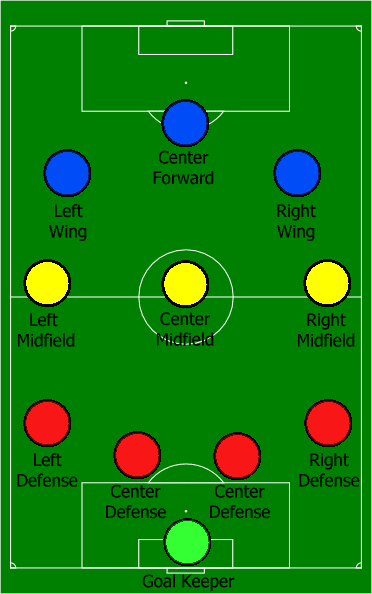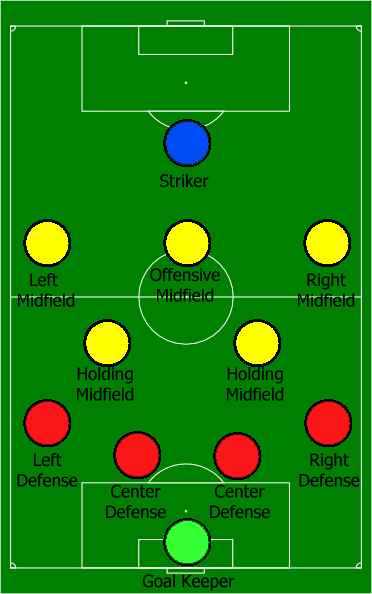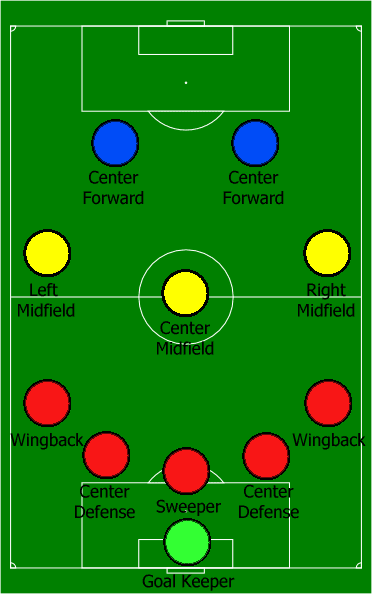
How important are soccer formations?
Truth be told, soccer formations aren't really that important in early youth soccer. At this point, the kids just want to have fun, work on their basics and get some exercise.
Teaching to play a position within a formation to children under the age of 10 is next to impossible, so get used to watching them chase the ball around like a herd of sheep. All kids play this way...it's not your fault.
As players get older, probably around age 10-12, they are able to understand a little bit more about strategy and tactics, and as a result, a proper formation and system can be used.
However, don't let the formation dictate how you play; rather it's important to look at your teams strengths and pick a suitable formation. Don't be too rigid in this either. If another formation works well in a specific situation, use it instead.
Use Your Team's Strengths
Soccer is more about the players than it is about the formation, so keep in mind the strengths of your team when deciding. The key to winning in soccer, like every other sport ever invented, is to maximize your team's strengths while minimizing that of your opponents.
In other words, you tactics and strategy should expose the weaknesses of your opponent. Of course, a problem could occur if your team's optimal tactic doesn't exploit the opposing team's weakness....then you'll have to adapt.
In any case, choose your formation only after you've had a good idea of what your team is made of. For example, a team with great attacking skill and speed might want to use a 4-3-3 to maximize their attack. Short on attacking depth? Try a 4-4-2 to clog up the midfield and sit back defensively while you wait for an opening.
The Formations
So first of all remember, any soccer formation used must add up to 10 players + 1 goal keeper that is allowed on the field of play at any given time according to the FIFA Laws of The Game.In any of the most common soccer formations used, the back four defensemen can line up either with the less commonly seen sweeper playing behind a central stopper or as a flat four, which is useful for playing the offside trap. Again, which way you decide to line up your defenders depends on your team's strengths and the situation. Without further ado, let's look at four of the most common formations seen in soccer today.

4-4-2Perhaps the most popular formation seen in soccer today, the 4-4-2 is a more conservative formation and relies on the strength and fitness of the outside midfielders to act as traditional wingers and provide width in attack while at the same time withdrawing to provide defensive help when necessary. The 4-4-2 requires talented midfielders who can control the tempo of the game, and wait for the team to get into an attacking position.
This formation`s strength is its versatility, as it can be used in many situations and can be changed on the fly depending on the circumstances. |

4-3-3
More attacking in nature, the 4-3-3 is another popular formation which has been used to great effect by many teams at both the club and international levels. Developed from the now obsolete 4-2-4 formation, the extra midfielder was used to aid the defence, while the third forward helped provide width to the attack.
The 4-3-3 is still in use today, most popularly by Barcelona whose deliberate, attacking style makes ideal usage of the formation.
This system is ideal for balanced teams that like to build their attack slowly with numerous passes through the midfield. |

4-2-3-1The 4-2-3-1 has become the soccer formation of choice in recent years by many of the world`s top teams including the very successful Spanish and Dutch teams of the 2010 World Cup. Playing with 2 "holding" midfielders in front of the defence who break up attacks as they develop, the 3 midfielders will service the ball to the lone striker who must be able to protect the ball long enough to wait for support to arrive.
This formation is useful if your team is highly skilled and is able to build up play with lots of passes through the midfield. It can be very fluid as well with players changing places and covering up for each other as they advance into the attacking third of the field.
|

5-3-2 (Sweeper)The main aspect of the sweeper formation is having the sweeper as a dedicated player behind the back four. Used by Germany with great results in the 1986 and 1990 World Cups, the formation is ultra defensive in nature, usually relying on either an early goal, or quick counter attack to achieve victory.
In recent years, the use of the sweeper has declined with most teams preferring a flat back four and an extra midfielder to defend the middle third of the field.
|
Return from Soccer Formations to the Home Page
|











